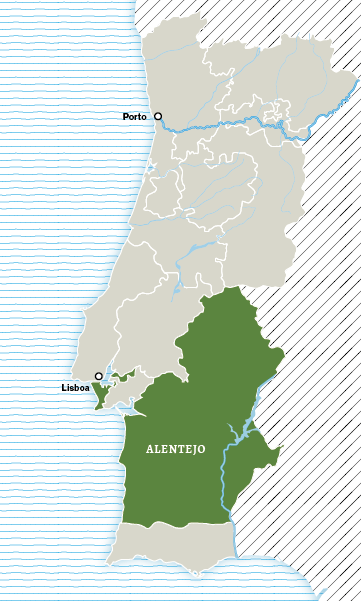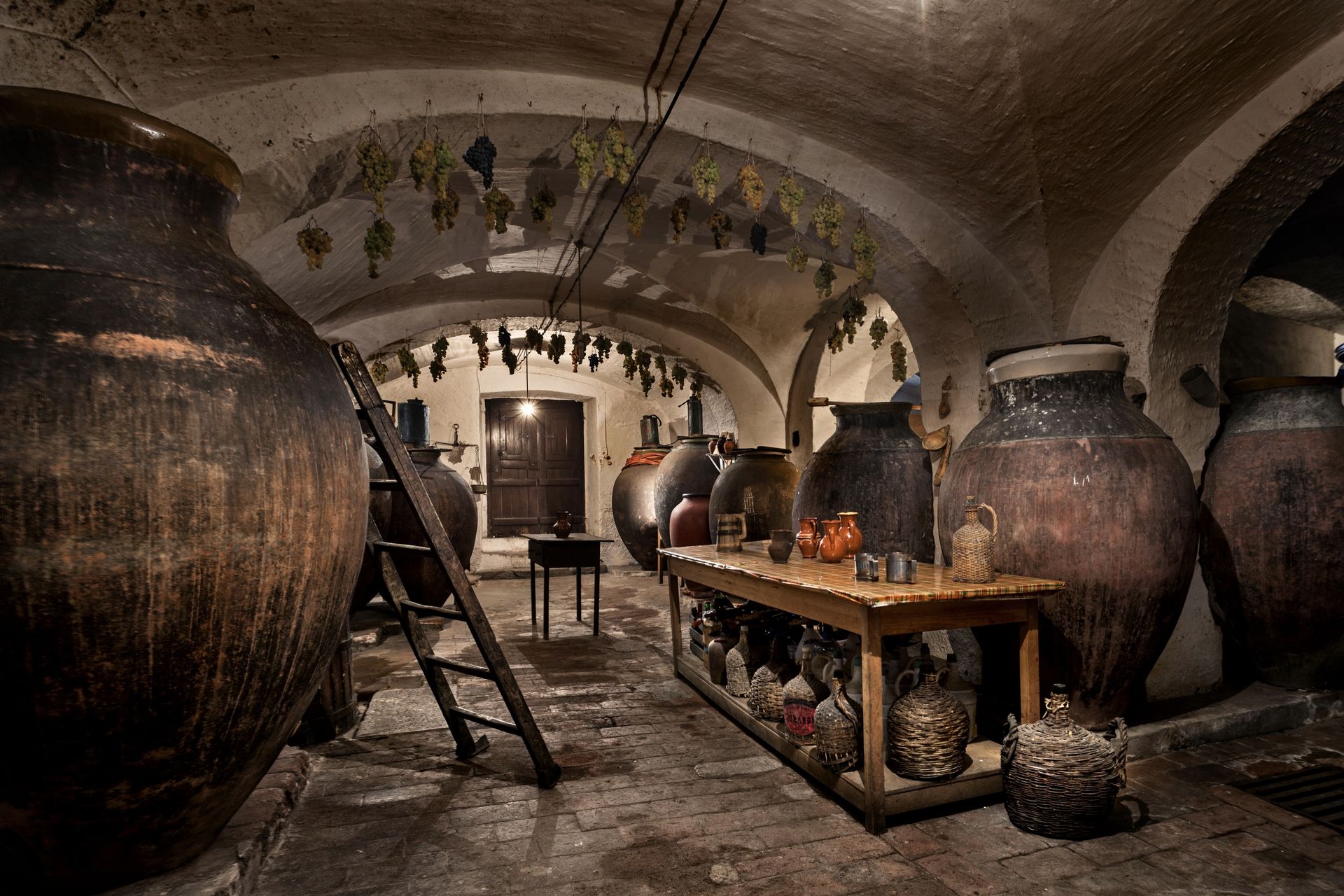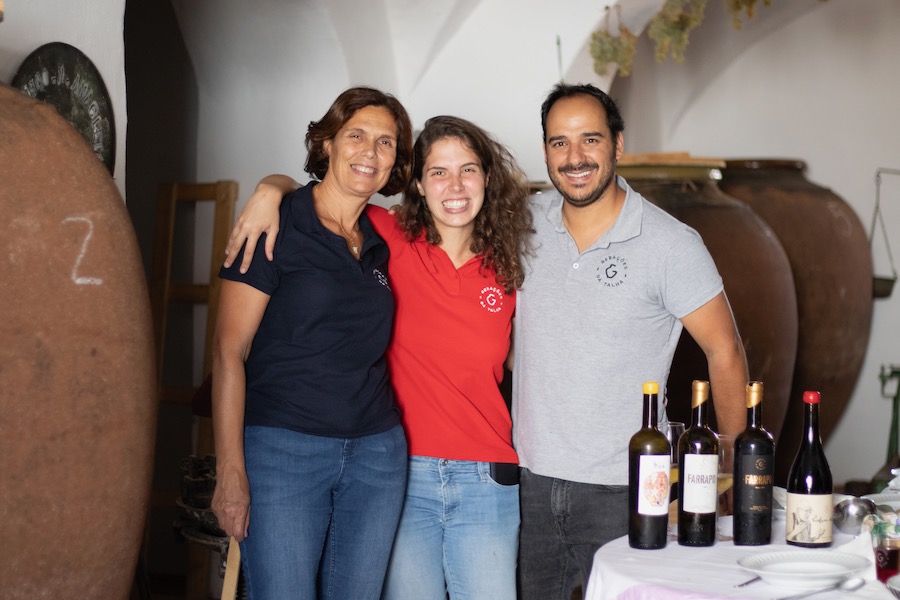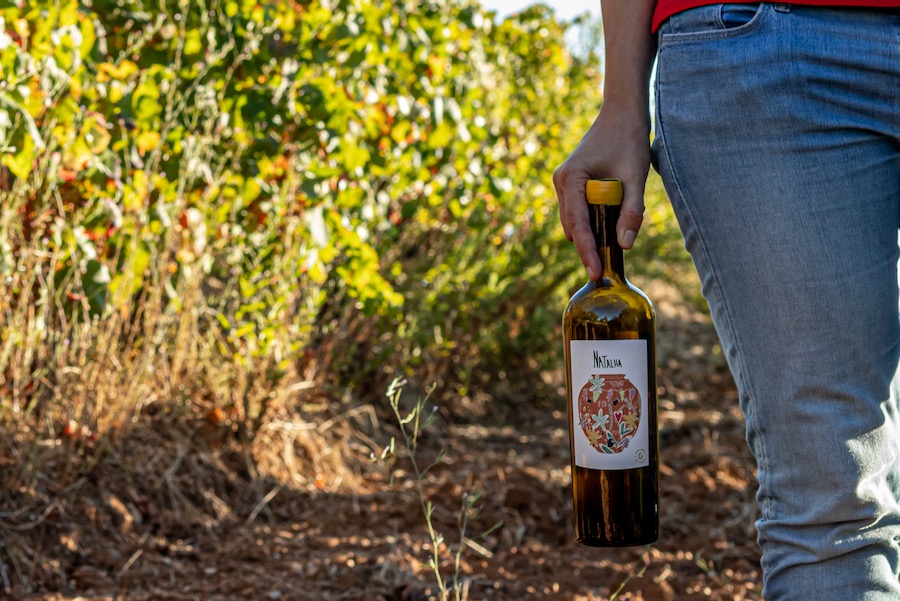PRODUCERS
Gerações da Talha
Al 2000 jaar wordt in Vidigueira, diep in Alentejo, wijn in amforen gemaakt, exact zoals de Romeinen het destijds voordeden. De wijnen bleven lang onder de radar omdat ze lokaal geconsumeerd werden. Daar bracht Teresa Caeiro verandering in.
Bekijk ons aanbod of lees hieronder de boeiende geschiedenis van Talha-wijn.

Toward New Horizons
In 2019, Teresa felt the time had come to connect her small village of Villa de Frades to the world, safeguarding the tradition that had been passed down to her from generation to generation. Until then, the wine created year after year in the family cellar was sold to the people of the surrounding villages. The wines were not bottled, but drained in jugs directly from the amphorae and drunk a short time afterwards.
We hadden al veel gehoord over de traditie van amforenwijn (of vinho de talha zoals ze het in Alentejo noemen) maar telkens we er bij onze Portugese contacten naar vroegen, deden ze er smalend over. Het was volgens hen eenvoudige wijn die niet kon bewaard worden. Achteraf bekeken, hadden ze gelijk: de wijn kon niet bewaren omdat hij op enkele maanden tijd werd opgedronken door de lokale bevolking.
Tradition had it that the harvest was brought in at the end of August, quickly fermented in the amphorae and tapped as early as November 11, on the feast of St. Anthony.
The wine was then drunk in the following months, and if sometime in the spring the amphorae in the village were empty, they needed to wait until November again;
Teresa besloot voor het eerst de wijnen te bottelen en de wereld te laten kennismaken met de wondere wereld van vinho de talha.
And so the best talha wines suddenly turn out to be far from simple. They have a very distinctive, recognizable character of their own and also seem to show quite a bit of storage potential.
In This Day and Age
That these wines are reaching us just now cannot be a coincidence. They fit perfectly into the spirit of this day and age because these are very naturally made wines. A whole movement of winemakers today is reverting to this method of yesteryear in response to a rationalization in the wine world that has gotten out of hand.
Modern tools are used in the production of vinho de talha only at bottling. Traditionally, the grapes are lightly crushed before ending up in the amphora with the skins and a good portion of the stems. This natural environment of baked clay, waterproofed every few years with a mixture of resin, beeswax and olive oil, proves to be very efficient in turning grape juice into wine. The amphorae are barely filled or the natural yeast cells shoot into action, and they also do their work much faster than in modern stainless steel tanks. Man intervenes here only to submerge daily the layer of skins that comes to the surface so that no infection of bacteria is possible.
Once fermentation is complete, the skins sink to the bottom of the amphora along with the yeast residue. There they protect the wine from oxidation, making it unnecessary to seal the amphorae.
Only when one decides to age a wine in an amphora for more than 9 months is the wine covered at the top with a layer of olive oil.
And finally, that layer of skins fulfills an important role as a filter. The amphorae are drained through an opening at the bottom that is sealed with a cork. When it is time to drain the wine, a wooden tap is slammed into the cork. The juice is thus naturally filtered and clarified through the thick cake of skins and stalks.
Only then will an inox tank be used to possibly blend the wine from multiple amphorae or allow it to rest for a while before bottling. At bottling, a small amount of sulfite is added. However, the need for this antioxidant is very limited because, unlike modern techniques, the wine built up resistance to oxygen in the amphora.
Jouw Dynamic Snippet wordt hier weergegeven ... Dit bericht wordt weergegeven omdat je niet zowel een filter als een sjabloon hebt opgegeven om te gebruiken.




